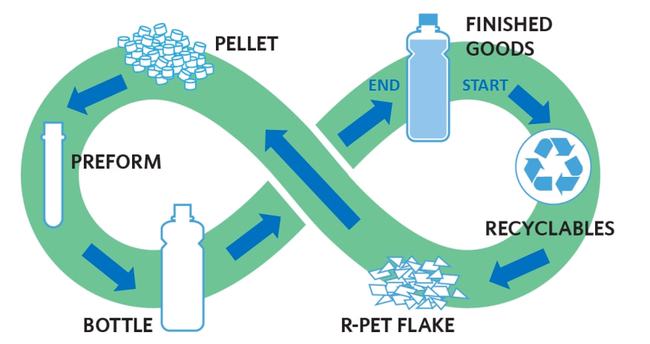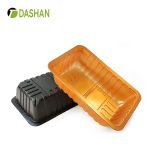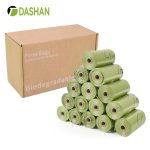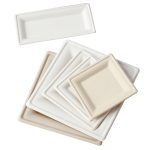Quick Summary:
While eco tableware is gaining popularity, recyclable plastic food containers made from PLA, PP, and PET remain a cornerstone of the global foodservice packaging industry in 2025. Their recyclability, durability, and compliance with new regulations make them a cost-effective, scalable, and future-ready solution for restaurants, retailers, and food distributors.
Introduction – Rethinking Plastic in 2025
In 2025, the conversation about packaging is no longer a simple eco-versus-plastic debate. Instead, the focus is on recyclability, total cost of ownership (TCO), and compliance with evolving global regulations. While single-use, non-recyclable plastics face bans worldwide, recyclable plastics like PET, PP, and PLA are carving out a strong role in sustainable packaging ecosystems. These materials offer both performance and circularity, making them a strategic choice for businesses balancing cost, compliance, and brand reputation.

Material Advantages: Why PET, PP, and PLA Lead the Market
PET (Polyethylene Terephthalate)
- Crystal-clear transparency for attractive food presentation.
- Highly recyclable and widely collected in global recycling streams.
- Strong, lightweight, and shatter-resistant – ideal for cups, lids, and salad boxes.
PP (Polypropylene)
- Heat-resistant, microwave-safe, and durable.
- Excellent for hot food containers, lunch boxes, and take-out trays.
- Increasingly accepted in mechanical and chemical recycling systems.
PLA (Polylactic Acid)
- Plant-based bioplastic made from renewable resources like corn starch.
- Industrially compostable where facilities exist, and recyclable in specialized streams.
- Clear, lightweight, and suitable for cold drinks, desserts, and fresh produce packaging.

Regulatory Compliance – Recyclable Plastics Meet Global Standards
Europe
- The EU’s SUP Directive bans non-recyclable single-use plastics but allows recyclable PET and PP packaging with EN13430 certification.
- PET and PP containers remain widely used in retail and foodservice, supported by extended recycling infrastructure.
North America
- California’s SB 54 law (2025) mandates 25% recyclability in single-use packaging. PET and PP meet these criteria, avoiding high EPR fees.
- Canada’s SOR/2022-138 ban excludes recyclable plastics, ensuring PET trays and PP containers remain compliant.
Asia-Pacific
- Japan and South Korea promote recycling systems that integrate PET bottles and trays.
- China and Vietnam continue to expand PET and PP recycling, making them highly export-competitive.
Market Trends – Why Businesses Still Rely on Plastic Food Containers
- Scalability: PET and PP containers can be mass-produced cost-effectively, meeting demand for QSRs, supermarkets, and meal delivery services.
- Circular Economy Fit: With established recycling streams, these plastics integrate into closed-loop supply chains, unlike niche eco materials that require specialized composting.
- Consumer Trust: Surveys in 2024 show 68% of global consumers trust recyclable plastic more than “greenwashed” claims of compostability without infrastructure.
Case Studies Across Industries
Quick Service Restaurants (QSRs)
A European fast-food chain shifted from PS containers to recyclable PP lunch boxes. Result:
- Compliance with SUP Directive
- 30% reduction in landfill costs
- Improved customer perception of sustainability
Supermarkets & Retail
A North American supermarket introduced PET salad bowls and fruit containers with recycling labels. Result:
- Increased recycling participation rates
- 12% sales lift in ready-to-eat produce categories
E-commerce Meal Kits
An Asia-Pacific meal kit company standardized PET trays for prepared meals. Result:
- Reduced breakage during shipping
- Stronger alignment with recycling regulations in multiple markets
Cost & Recycling Value Analysis
While bagasse and compostable packaging can cost more per unit, recyclable plastics deliver long-term savings through circular recovery. For example:
- PET trays: $0.035–$0.045/unit, recovered in established bottle-to-tray recycling systems.
- PP lunch boxes: $0.038–$0.050/unit, with high durability and microwave safety.
- PLA cold cups: $0.045–$0.055/unit, meeting demand for plant-based but recyclable packaging.
In regions with deposit return schemes (DRS), recyclable plastics can even generate material value post-consumer, offsetting part of the initial packaging cost.
Future Outlook: 2025–2030
Closed-Loop Systems – More retailers and QSRs are adopting “bring-back” schemes for PET and PP containers, ensuring recovery and reprocessing.
Advanced Recycling – Chemical recycling technologies are scaling, expanding PP and PET recovery capabilities.
Smart Packaging – QR-coded recyclable plastics enable traceability and consumer engagement.
Material Innovation – Blends of PET with recycled content (rPET) and bio-based PP are reducing carbon footprints further.
Why Xiamen Dashan Plastic Packaging Leads the Transition
- Wide Material Options: PET, PP, and PLA containers designed for food safety, freshness, and recyclability.
- Global Compliance: Products certified for EU, U.S., and Asia-Pacific regulatory standards.
- Customization: Branding, embossing, and tailored packaging for foodservice, retail, and distribution.
- Sustainability Commitment: Offering recyclable and renewable material solutions to support clients’ ESG goals.

Conclusion – Counting the Right Costs
In 2025, recyclable plastic food containers prove that not all plastics are created equal. PET, PP, and PLA combine regulatory compliance, recycling compatibility, and durability with cost efficiency, making them a future-proof solution. Businesses choosing recyclable plastics aren’t just avoiding bans—they’re securing brand trust, operational savings, and long-term competitiveness.
FAQ
1. Are plastic food containers still allowed under 2025 regulations?
Yes. Non-recyclable plastics face bans, but recyclable PET, PP, and PLA containers are widely permitted across global markets.
2. How do recyclable plastics compare in cost to eco tableware?
Recyclable plastics like PET and PP are often 10–20% cheaper than compostable alternatives, with additional recovery value in recycling streams.
3. Can PET and PP containers be made from recycled content?
Yes. rPET and recycled PP are increasingly common, reducing carbon footprint while maintaining safety and performance.
4. Is PLA recyclable everywhere?
PLA recycling depends on regional infrastructure. In markets with industrial composting or PLA-specific recycling, it is a sustainable option.
5. Why should businesses choose recyclable plastics over compostables?
Recyclable plastics integrate into existing recovery systems, ensuring scalability, cost savings, and compliance—while some compostables require facilities that may not exist in all regions.
🔹 References
-
European Commission – Single-Use Plastics Directive (SUP).
https://environment.ec.europa.eu/topics/plastics/single-use-plastics_en -
U.S. Environmental Protection Agency (EPA) – Plastics: Material-Specific Data.
https://www.epa.gov/facts-and-figures-about-materials-waste-and-recycling/plastics-material-specific-data -
California Senate Bill 54 (Plastic Pollution Prevention and Packaging Producer Responsibility Act).
https://leginfo.legislature.ca.gov/faces/billTextClient.xhtml?bill_id=202120220SB54 -
Government of Canada – Single-use Plastics Prohibition Regulations (SOR/2022-138).
https://laws-lois.justice.gc.ca/eng/regulations/SOR-2022-138/ -
Ellen MacArthur Foundation – New Plastics Economy Global Commitment Progress.
https://ellenmacarthurfoundation.org/global-commitment -
ScienceDirect – Advances in Food Packaging and Recycling Technologies.
https://www.sciencedirect.com/ -
Packaging World – Recyclable Plastics Trends in Foodservice.
https://www.packworld.com/




